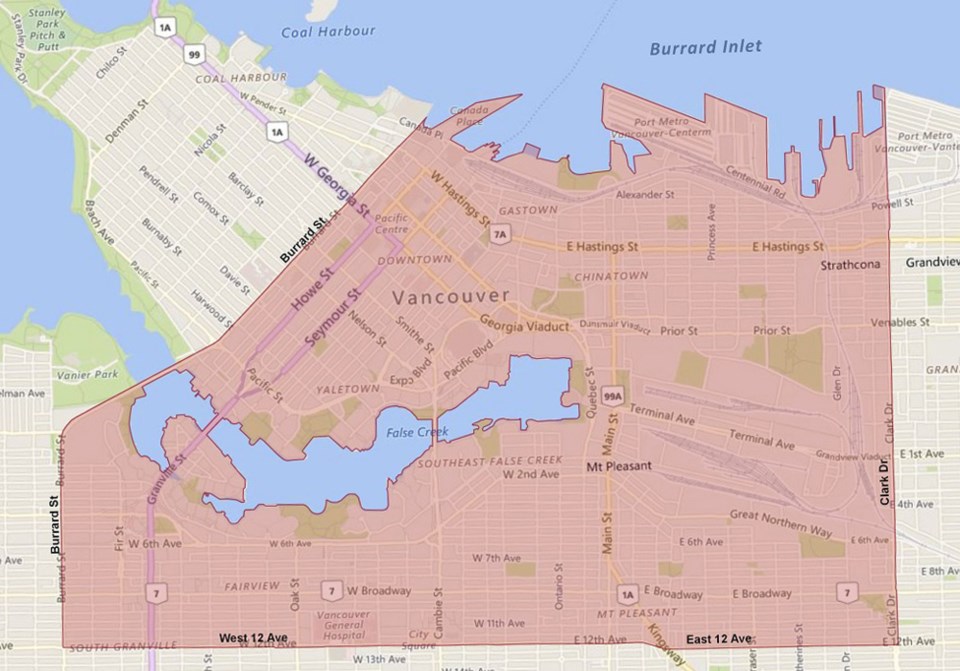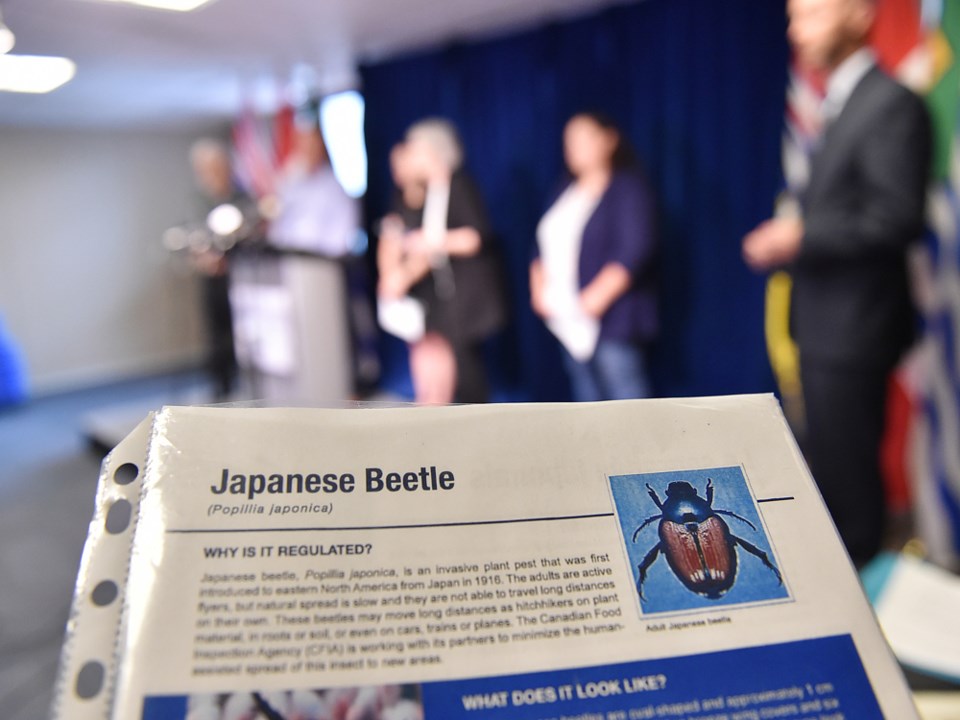The Japanese beetle, an invasive pest that can significantly damage plants, gardens and agricultural crops, has landed in Vancouver.
“This is a very serious pest,” said Dr. Jane Pritchard, director of plant and animal health, and chief veterinary officer, with the Ministry of Agriculture. “We are very worried about it escaping the area.”
The ministry has ordered the city and Vancouver Park Board to treat approximately 19 hectares of publically owned land in the vicinity of False Creek in an effort to eradicate the beetle.
The areas, including a number of parks, will be sprayed with a larvacide called Acelepryn. Pritchard with said the larvacide is considered “very safe.”
“We have selected a larvacide that has a very low environmental impact and is very safe… It will only actually kill the grubs or larvae that are in the soil eating the roots of turf grass,” she said, adding it will not affect people, pets, mammals, birds, bees or other animals.
The larvacide will be sprayed at ground level and because the beetle only goes through one lifecycle it will only have to be applied once this year.
The treatment area includes a 200 metre buffer around where the beetles have been detected and includes areas in and around the following parks: David Lam, George Wainborne, Coopers’ Charleson, Sutcliffe, Emery Barnes, May and Lorne Brown, CRAB (At Portside) and Thornton.
Howard Normann, director of parks, said the park board hopes to start spraying the week of June 4 and the entire operation will take three to four weeks. He said that after a park is sprayed it will be closed for the day to allow the larvacide to dry.
In an effort to stop the beetle from spreading to other areas of the region the Canadian Food Inspection Agency is prohibiting the movement of plants and soil out of a large area of the city that stretches from Burrard Street east to Clark Drive, and from 12th Avenue all the way to Burrard Inlet. Between June 15 and Oct. 15 the restriction also includes “above ground” plant matter, such as prunings and branches with leaves.

The good news, however, is that residents can still put items such as plants and yard trimmings, in the city’s green bins.
“We fully expect the cooperation of the residents of Vancouver in the regulated area,” said Shannon Derksen, a CFIA operational specialist. “We know Vancouver is a green city that values its parks and green spaces. We know that Japanese beetle can cause damage to these spaces so we’d expect some awareness and cooperation.”
In the event that plants or soil are moved out of the designated area without permission residents can face fines of between $500 and $1,300, and businesses can be fined up to $10,000.
Derksen told reporters Thursday that the beetle was first spotted in Vancouver last summer. It was detected in one of the traps set in the city by the agency — the traps are set as part of the agency’s routine surveillance for the pest. As a result, CFIA set an additional 800 traps around the city and found more beetles. Approximately 950 beetles were found in 42 traps. The majority, about 90 per cent, were found in David Lam Park.
As the name suggests, the beetle originated in Japan and was first introduced to eastern North America in the early 1900s. It has spread throughout the eastern side of the continent but B.C. has been free from the pest until now.
In addition to restricting the movement of plants and soil outside of the designated area, the agency will also be setting 1,500 traps between Whistler and Hope this year in an effort to determine if the beetle has spread to other areas of the region.
Unlike the well-known European chafer beetle, where the damage is caused by raccoons and crows digging up the grass to eat the grubs, the Japanese beetle has the potential to damage and kill plants. The larvae feed on the roots of lawns and other plants while the adults, which are considered heavy feeders, attack the flowers, foliage and fruit of more than 250 plant species, including roses, blueberries and grape vines.
Tips for residents:
- Report any sightings to the Canadian Food Inspection Agency through its website.
- Remove as many adult Japanese beetles as possible by hand and put them in soapy water to kill them.
- The beetles are easier to capture in the early morning because the dew makes it harder for them to fly.
- Keep any dead beetles and notify CFIA.
- Attract birds by putting out a birdhouse and food.



